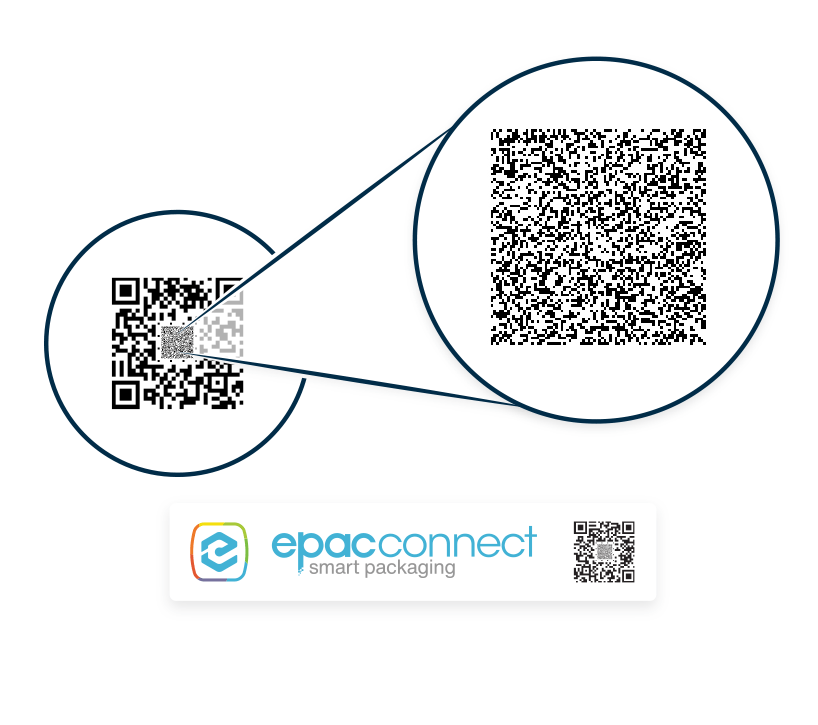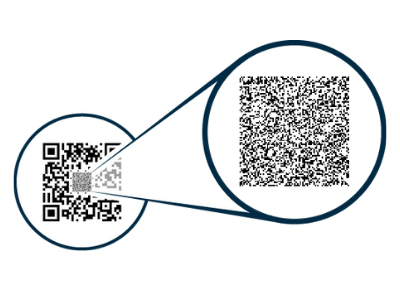There’s a lot of competition out there, no matter what industry. It doesn’t matter if you’re selling mentholated toothpicks or vegan chocolate chip cookies; someone’s always got a hustle. The internet democratized how we shop in many ways that are frankly incalculable. What were once fringe ideas of “maybe someone would dig this” evolved into full-blown empires touching areas of fashion, food, drinks, and everything in the known universe for niche products and businesses.
One of the coolest ways companies breakthrough and link up with their consumers is through connected packaging. Connected packaging takes the brand to the next level because it connects the consumer and drives awareness thanks to jumping into our phones as we’re jumping into their branded worlds.
You’ve got to stand out
You’ve seen QR codes, and they’re on everything. It’s like they fell from the sky overnight, and boom, they’re on our water bottles, doggie bags, and sunscreen. Thanks to Apple updating our iPhones to read the code back in 2017 by just turning on the camera to scan it, the world had one less thing to worry about during the pandemic. This small technological win was a lifesaver for restaurants when we figured out what “contactless” truly meant.
Restaurants put a code on the table, and everyone could scan it with their smartphones. Now, QR codes are popping up everywhere and on everything. So while yes, the technology works for ordering cheese enchiladas at your neighborhood spot, it’s also effective for selling just about anything from high-end toothpaste to backpacks.
Enter serialized QR codes
Now there’s a next generation of QR codes, called serialized QR codes. It’s like your regular QR code on the outside, with a unique serialized code in the middle. Each one is as different as a thumbprint, and they’re connected to a unique database record to help you authenticate your product, engage your customers with personalized messages, and deliver traceability information, to name a few benefits.
When a consumer scans it, they can get information about what particular batch the ingredients that made that product came from, who packaged it, what route it took, and if it’s the real deal or a fake.
Where information and fandom collide
Say you’re selling tortilla chips and trying to compete with the power of Frito Lay and their Doritos empire. What’s cool about a serialized QR code is that by putting one on the bag, a consumer who’s enjoying the chips can scan the packaging and now can take a deep dive into whatever information you’d like to share.
This information could be a fan-driven experience, information about the brand, how to reorder directly from the company, as a marketing tool for asking for signups, contests, or even free stuff. Whatever you want the customer to know about your chips, if they come in other flavors or if they’re coming to a town near you, you can provide this information however you like.
Serialized QR codes promote curiosity. If someone chooses to scan the code, they intentionally want to know more about your brand, and this is the perfect way to convert them from interested into devoted followers.
You can inform them about other products they might enjoy or if a new product lineup is coming out this fall. You’re offering information that matters.
Change the game with connected packaging
One of the most innovative ways to use connected packaging is through sample sizes. We’ve all seen the sample energy drink powder for $0.99 or the single granola bar at the gas station – by adding a serialized QR code to the packaging, the customer can order direct from the company – cutting out the middleman on full-size products. Even if they can’t order direct, a link can be added straight to an online retailer like Walmart or Amazon.
Environmental impact explained
Given today’s cultural climate, people want to know how your company impacts the world, and they want to know the details and connected packaging allows for that. If your company is dedicated to producing products that don’t affect the environment, a serialized QR code could provide detailed information for curious consumers.
Packaging, but smarter
Connected packing blurs the lines between digital and physical retail experiences. Brands using serialized QR codes deliver unique experiences in different settings, and by adding a digital element to packaging, consumers can use the tech to reorder items directly from their phones.
Because buyers want to know more than ever, the serialized information on these new types of QR code offers the chance to inform because once a code is scanned, the information provided can be endless – the fight for space on the product is irrelevant. Third-party platforms charge a small subscription fee to create, track and manage the codes for your packaging.
If you’re interested in how your company can take branding to the next level through connected packaging, we’d love to talk.


